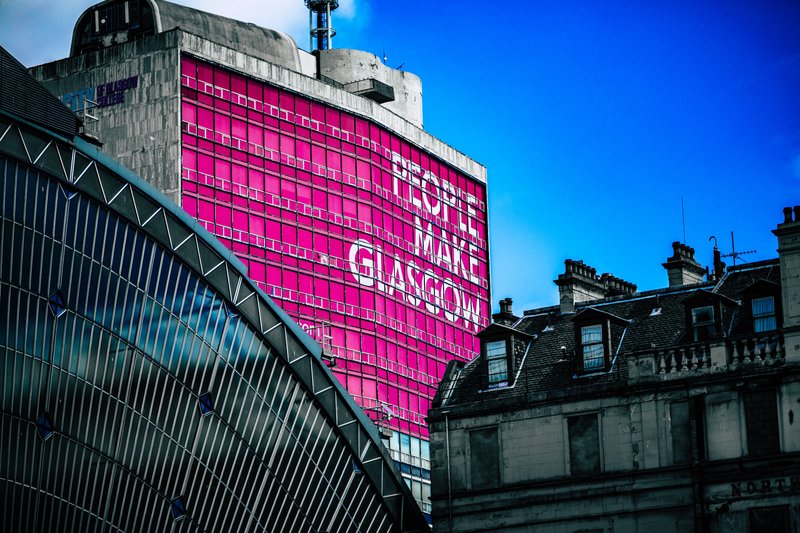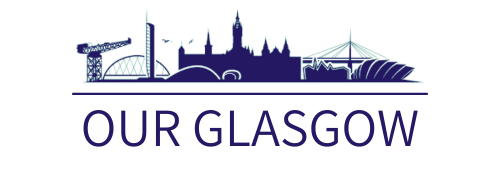Glasgow: Facts & Figures
Glasgow is Scotland’s largest city and one of the UK’s most dynamic destinations. Built along the River Clyde, it’s a place where rich history meets cutting-edge creativity. Known for its friendly people, impressive architecture, and thriving cultural scene, Glasgow is a city that truly flourishes, just as its motto promises.

Quick Facts at a Glance
- Population: Around 635,000 (Greater Glasgow over 1.8 million)
- Founded: 6th century AD (became a royal burgh in 1175)
- Region: West Central Scotland
- Area: Approx. 68 square miles (175 km²)
- River: The River Clyde
- Nickname: “Dear Green Place” – for its many parks and gardens
- Motto: “Let Glasgow Flourish”
- UNESCO Title: City of Music (since 2008)
A Brief History of Glasgow
Glasgow’s story stretches back to the 6th century, when St Mungo founded a small religious settlement on the banks of the Clyde. Over time, the town grew into an important trading port, exporting goods across Europe.
During the Industrial Revolution, Glasgow became a world leader in shipbuilding, engineering, and manufacturing, earning the nickname “The Second City of the Empire.” Magnificent Victorian architecture from this period still lines the city centre today.
The 20th century brought transformation, with regeneration projects turning former docklands into modern landmarks such as the SEC, Hydro, and Riverside Museum. Glasgow has hosted major events including the European City of Culture (1990), Commonwealth Games (2014), and COP26 Climate Summit (2021), cementing its reputation as a global city.
Culture & Lifestyle
Modern Glasgow is bursting with creativity and energy. Music is at its heart, from global acts at the OVO Hydro to intimate gigs at King Tut’s Wah Wah Hut and the legendary Barrowland Ballroom.
The city’s museums and galleries are among the best in the UK, including Kelvingrove Art Gallery & Museum, the Gallery of Modern Art, and the award-winning Riverside Museum. Most of which are free to enter.
Architecturally, Glasgow blends grand Victorian buildings with modern icons and the distinctive designs of Charles Rennie Mackintosh. Sport also plays a major role, with passionate support for Celtic and Rangers, and world-class events at Hampden Park.
It’s no surprise Glasgow is known as Scotland’s cultural capital, and with more live music venues per person than any other UK city, the title fits perfectly.
Parks & Green Spaces
Glasgow isn’t called the “Dear Green Place” for nothing. The city is home to over 90 parks and gardens, offering peaceful escapes and scenic walking routes.
Highlights include:
- Kelvingrove Park – leafy trails and views over the West End
- Pollok Country Park – a vast estate with Highland cattle and woodland walks
- Glasgow Green – the city’s oldest park, home to the People’s Palace
- Botanic Gardens – famous for its glasshouses and riverside paths
These spaces make Glasgow one of the greenest cities in the UK and a joy to explore on foot or by bike.
Modern Glasgow
Today, Glasgow stands as Scotland’s economic powerhouse, with thriving sectors in finance, education, digital technology, and the creative industries. The city’s universities attract students from all over the world, and its energy continues to fuel innovation and growth.
The River Clyde has been transformed with striking modern developments, including the SEC Armadillo, Clyde Arc Bridge, and Riverside Museum, blending the city’s industrial past with its forward-looking future.
Glasgow has also become a popular film location, appearing in major productions such as World War Z, Indiana Jones and the Dial of Destiny, and The Batman. All drawn to its distinctive mix of architecture and atmosphere.
Fun & Lesser-Known Facts
- Glasgow’s Subway is the third oldest underground system in the world (after London and Budapest).
- The city has more listed buildings than anywhere else in Scotland.
- The slogan “People Make Glasgow” was chosen by residents to represent the city’s spirit.
- It rains on average 170 days a year, but Glaswegians’ humour and warmth more than make up for it.
- Famous locals include Charles Rennie Mackintosh, Billy Connolly, Lulu, and Susan Boyle.
